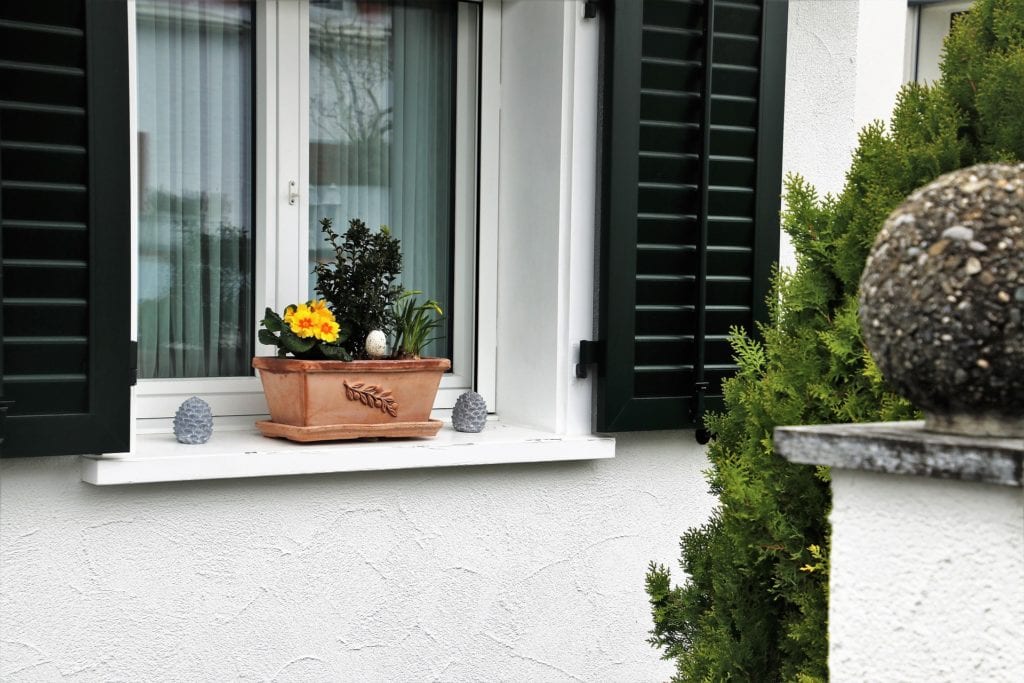
Do you know when you should replace your roof? If your answer was, “when it starts to rain inside”, that’s far too late. Your roof is one of the most important elements to your home’s comfort and structural integrity, so don’t wait until you have to put buckets around the house to get your roof fixed. Here are some signs you should recognize that let you know it’s time to replace your roof.
The age of your roof is one factor that will impact when you should replace it. If you have asphalt shingles, they can last 15-20 years. Roofing made from sturdier material, such as slate or metal, can last even longer. For homeowners with asphalt roofs, it is a good idea to replace it after 20 years.
The collective wear and tear on your roof is extremely important to look for when surveying the condition of your roof. The overall health of the shingles is often a good indicator of your roof’s health. Check to see if your shingles are curled at the edges or appear to be bubbling. Wherever you see shingles that aren’t laying flat, it’s a strong indication that the shingle is damaged and not effectively repelling the elements. Be on the lookout for shingles that are balding or completely missing. While it’s normal for shingles to lose some of their grittiness over time, what isn’t normal is for your shingles to shed en masse. If your house has a chimney, you should inspect the flashing around it to see that it’s not damaged. Flashing is a barrier that seals the space where the chimney joins to the roof, and if this area isn’t intact, your house will be more susceptible to leaks. Of course, if your roof appears to sag, the structure is no longer properly supported and needs to be replaced.
Perhaps the most severe signs can be seen from inside the house, which means you should replace your roof as soon as possible. Inspect your attic during the daytime to see if sunlight shines through the ceiling. If you see light coming through, it’s evident you need to replace your roof. Look at your ceiling and the top of your walls—if you see mold or signs of water damage, you have leaks in the roof which requires an entire overhaul. In instances where you see fungal growth, it’s highly recommended that you call mold specialists to remove it.
Depending on the nature and severity of these roofing issues, you may be able to just repair the affected shingles rather than replacing everything. A reliable and certified roofing contractor should be able to tell you if patching will suffice. The best ways to keep your roof in good condition are to get a reliable contractor to install it and actively make smaller repairs to extend its lifespan. Maintaining the upkeep on your home will be important in building home equity. Replacing your roof is not a job that should be put aside; taking care of your roof is essential for taking care of your entire house.
If you have any questions about how to maintain your home, contact one of our licensed Mortgage Loan Originators. If you are ready to begin the home buying or selling process, click here to get started!
New Year’s is an ideal time to make resolutions to hit the gym, eat healthier, and make better choices. For many homeowners, the process of making their home marketable can feel overwhelming, and the prep stage often gets put on the backburner. Why not resolve to make 2020 the year to get your home ready to go to market? Here are some ideas to get you started.
A clean home is a happy home! Use the new year as an excuse to really give your home a deep clean and get rid of unnecessary items. When your home looks clean, it gives a positive impression that you take care of your property. Along with eliminating your home’s dirt and grime, take a moment to go through your belongings and get rid of things you don’t need anymore. Try starting with one room and sift through it thoroughly. Beginning the cleaning process now will not only make your house less cluttered, but will also reduce the amount of packing to be done once your home is sold.
Despite the popularity of house flipping reality shows, many people will not be attracted to homes that need heavy repairs or upgrades. A home that needs major fixes means the buyer will have to invest even more money into the purchase, and that can make a sale less likely to happen. If you needed another reason to get problem areas fixed, improving utility issues can increase your home equity. Take action to get everything in your home in working order before it opens to prospective buyers.
The exterior of your home is the first thing buyers will see when your home is on the market. If they aren’t intrigued by the outside, they may not want to look at the inside, either. You don’t need to do any fancy landscaping, simply mowing the lawn and trimming overgrown vegetation can do wonders. Additionally, consider giving your house a fresh coat of paint if it’s looking faded.
Before you officially declare your home for sale, it’s important to find a realtor who understands your needs and can help you get the best price for your home. An experienced agent will be able to guide you through the selling stage and know how to market your home. You may have to try out a few agents before you find one that’s a good fit for your situation, but having a competent agent is well worth the search.
Figuring out how much your house is worth and how much you could potentially make from a sale can be a bit confusing. Work with your agent to perform a competitive market analysis to get an estimate of your home’s value. Once you have an idea of its value, you and your agent can discuss an ideal selling price. Finding that sweet spot for your asking price will help optimize future profits and attract buyers.
Don’t feel like you need to fulfill all these resolutions at once. Start with one and make it your goal to work your way through them. In no time, your home will be ready to show off to prospective buyers. What better way to start the new year than to make your home the best it can be!
If you have any questions or want more information about the home selling process, contact one of our licensed Mortgage Loan Originators. If you are ready to begin the home buying process, click here to get started!
As the days get shorter and the temperatures go down, the threat of winter storms and rising gas and electric bills become real. In order to make sure that your home is protected during a storm and is efficiently using energy, take some time to prepare for the winter months ahead. Here are a few easy ways to maximize your comfort and budget as the mercury falls.
One of the most important winterizing tasks you can do is to have an HVAC professional come in to inspect your furnace and clean your ducts. This is an excellent way to prevent having a furnace emergency in the middle of the winter.
Make sure to change your furnace filters once every three months as well, in order to maintain good airflow and air quality in your home.
If you have hot water radiators in your home, be sure to bleed them before turning on your furnace. You can do this by turning on the water valve and then turning it back off when the water starts to flow.
Programmable thermostats are an excellent way to control your home’s energy use when you’re not there. If you haven’t already made the switch, think about doing it this year—your money will come back to you in energy bill savings.
Although it doesn’t have to be cleaned every year, it’s a good idea to call a Chimney sweep to clean and inspect your chimney. Make sure that you have your chimney top capped or screened to make sure that animals and debris can’t get in.
Ensure that your fireplace damper is in good working condition and is closed when the fireplace is not in use to prevent heat loss.
Buy or chop plenty of firewood and be sure to store it in a dry place away from the exterior of your home.
Make sure to clean your gutters of leaves and debris that have accumulated during the autumn season. Also check that your downspouts are clear so water can easily flow away from your house.
Adding extra insulation to your attic will keep the roof warm and prevent ice dams.
Be sure to replace any worn shingles or tiles on your roof as well.
Rake away debris and edible vegetation from your home. Inspect the foundation for any crevices, cracks, and exposed entry points. Seal any cracks that you might find. This will keep out wildlife and rodents as well as retain warm air inside your home. If you have a window well in your basement, protect it with a plastic shield to keep water out.
To effectively inspect your windows, moisten your hand with water and run it along the edges of the interior side of all windows and door trim, and at the top of baseboards along exterior walls. Caulk any areas where you feel air coming in.
Remove any window-mounted air conditioning units. If you have a permanent wall-mounted air conditioning unit, purchase a cover for it and make sure it is sealed with weatherstripping.
Replace all screen windows with storm windows to add an extra insulation layer. When not open, make sure to keep your windows locked—this creates a seal between the panels. If any glass windows are cracked, have them replaced.
If you know you’re not going to be opening your windows for a while, cover them with window film. This is an inexpensive way to increase insulation and decrease the potential for drafts.
Use weatherstripping around doors and install doorsweeps if needed. A good way to check your door’s insulation potential is to close a dollar bill in the door—if it easily slides out, adding weatherstripping will provide a tighter seal.
Seal the entrance to your attic to prevent heat from getting in—if you have a door, attach a doorsweep to the bottom of it. If your attic has a hatch entrance, line the perimeter of it with weatherstripping.
Check the thermostat on your water heater—if it is set to above 120°F, turn it down. Insolate the water lines around the hot water heater if they are warm to the touch.
Drain and turn off all hoses, sprinklers, and outdoor irrigation systems. Also, drain any hoses and pipes coming from your air conditioning unit. Vacuum any pools of water that are in the drain pool.
Trim any tree branches that are close to your home or electrical wires. Seal concrete driveways, brick patios, and wood decks to prevent cold weather damage. Clean and store summer gardening tools and move any potted plants indoors.
Also make sure to drain gas from your lawnmower before storing and make sure your snow shovel and/or snowblower is in good working order.
Reversing the direction of ceiling fans will force warm air down and ensure proper circulation. The blades should be rotating clockwise in the winter and counterclockwise in the summer.
By completing these simple tasks you will ensure that your home is ready for whatever the cold, winter months may bring. Now is also a great time to change the batteries in your smoke and carbon monoxide detectors. When you’re done, be sure to cozy up in a big sweater and enjoy a warm beverage in the comfort of your dry, energy efficient home.
You only have one chance to make a great first impression and for your home that impression comes from curb appeal. It’s up to you to make your home appealing, so spend the time and money to entice potential buyers to take a further look. Here are 8 ways to add curb appeal to sell your home:
Clean: The first thing you should do to your home is give it a much-needed “bath”. Rent a power washer if you don’t own one or hire a professional. You’d be amazed at the difference a deep cleaning will make to your home. Don’t stop at just the house; clean the porch/deck, walkways and driveway. Getting rid of all the grime will make your home look like a million bucks without having to spend it.

Paint: Now that your home is squeaky clean, you can add a fresh coat of paint. Redoing the entire exterior of your home isn’t necessary, so if you’re working on a budget don’t worry. Instead, focus on painting a couple areas that will stand out. The most eye-catching spots will be your front door, shutters, trim, porch, and mailbox. Painting just these spots will keep the cost of paint down while helping rejuvenate the look of the home.
Update Any Metals: Those outdated light fixtures, rusty house numbers, and ready to fall apart railings have got to go. Start with finding modern light fixtures for your porch and go from there. All metal used around the exterior of your home should remain consistent to tie everything together. Be sure to pick items that match the overall design of your home; the exterior of your home should act as a preview for potential buyers of what they can expect when they walk inside.
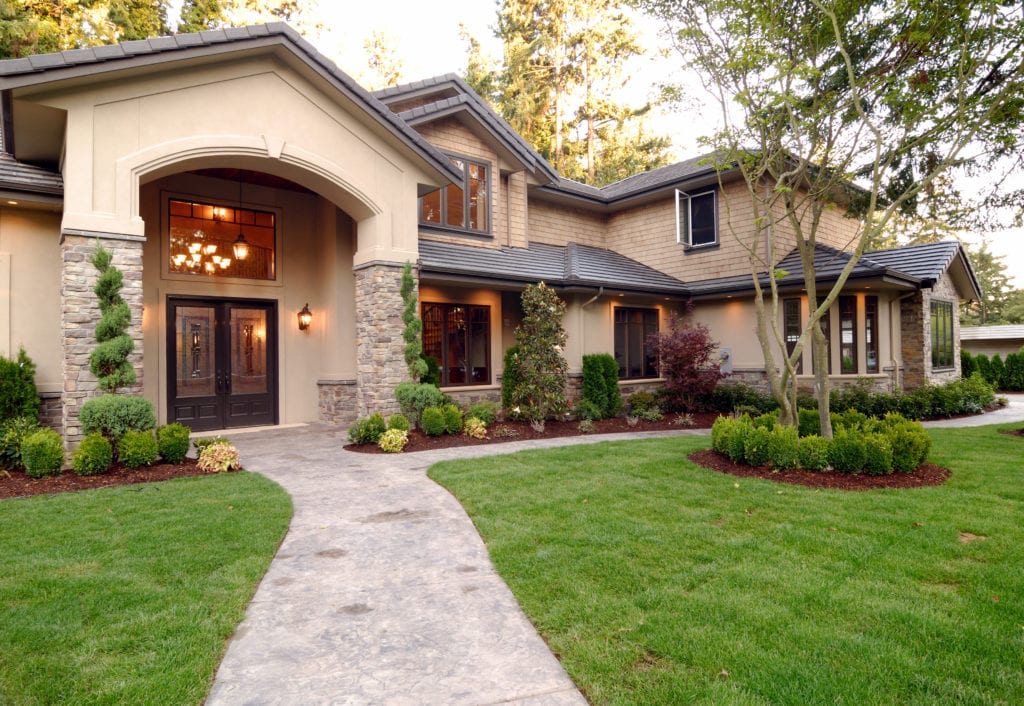
Symmetry: While updating and adding pieces to the front of your home, check for symmetry. Have lighting fixtures or potted plants on each side of your front door. This will not only look inviting but will ultimately make your home more pleasing to the eye.
Add Seating: Having a place to sit will make your home seem more inviting. No matter the size of your porch or backyard, find a piece of furniture that will fit the space. For smaller areas, use a bench or rocking chair. For the backyard, a group of nice chairs or a single loveseat would give the perfect touch. This extends your “living” space outside and potential buyers can imagine themselves sitting around a fire pit, reading a book, or sipping their morning coffee. Add a path to this area and install lights along the way. This will not only make your yard look nice but is good safety feature.
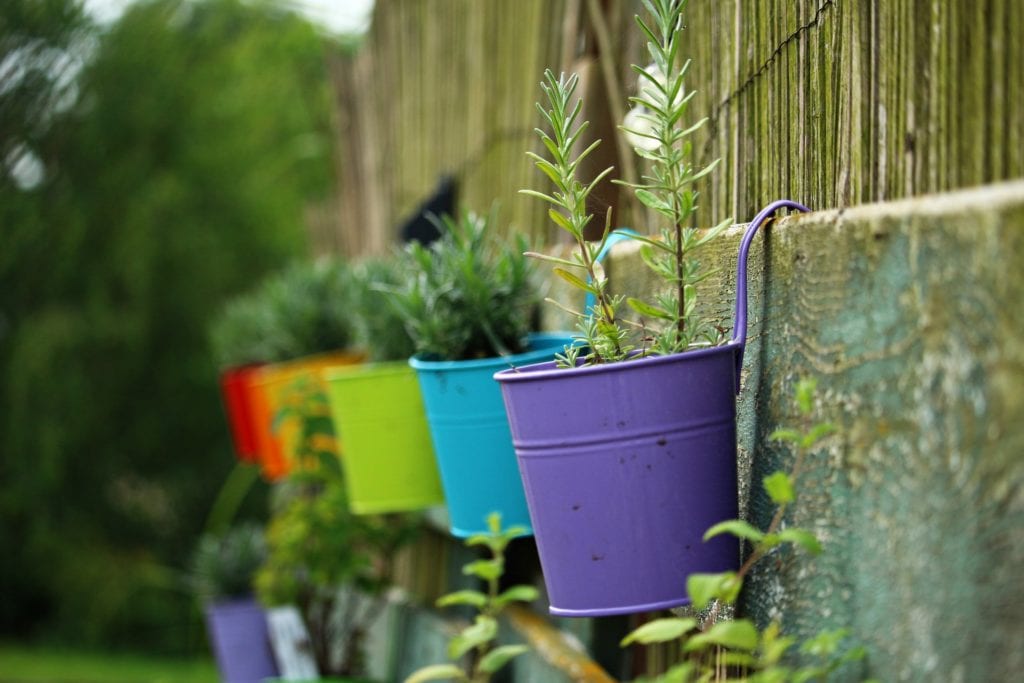
Use Color: If your yard is lacking, use color—especially contrasting—to your advantage. Ditch the same old brown mulch for a brighter red. Find some bright colored pots for your plants and strategically place them around your yard. Use river rocks to create a border between your grass and beds. Dress up your mailbox with a new planter box and some bright flowers to make it really stand out.
Hide Unsightly Items: Remove the ugly from your yard. Garbage cans, recycling bins, AC units, toys and tools will take away from the organized and clean look you want. If you have a shed, put it to good use with what you can. Since you can’t remove your AC unit, try to hide it with well-placed shrubs.
Plants/Trees: If you have the budget, plant new trees, shrubs, or flowers. Make sure you research how big the tree will become before making any decisions. You don’t want something that will become 20 feet tall to be placed too close to your home or have the tree shed acorns all over your pool. Trim the hedges and pick all weeds. You’ll have to keep up with maintaining your yard as you won’t know how long it will take to sell your home.
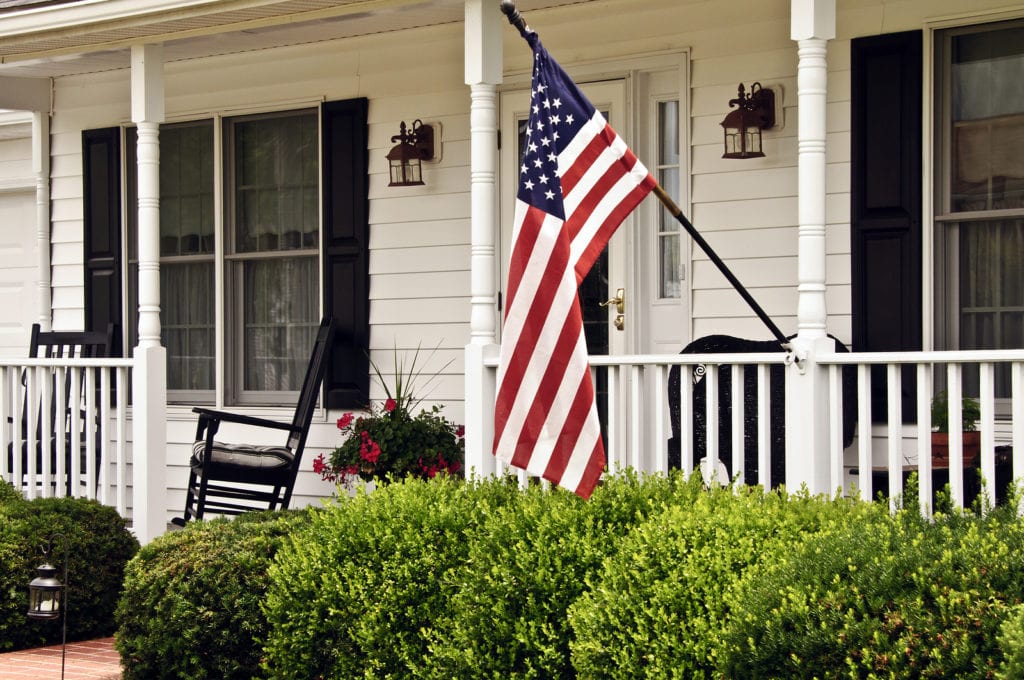
There are endless possibilities to improve your curb appeal without breaking the bank. Choose tasks that you can easily do yourself to cut on costs. Potential buyers want to be drawn into the possibilities of the home, not exactly what you’ve created. If you can entice them to walk through the door, you’ve done your job.
If you have any questions or want more information about the homebuying process, contact one of our licensed Mortgage Loan Originators. If you are ready to begin the process, click here to get started!
Not sure what to do with your tax return? You can use the money to make some much needed upgrades to your home! Whether you are thinking of selling your home or planning on staying for a while, these suggestions for using your tax return for home renovations are sure to add value to your home.
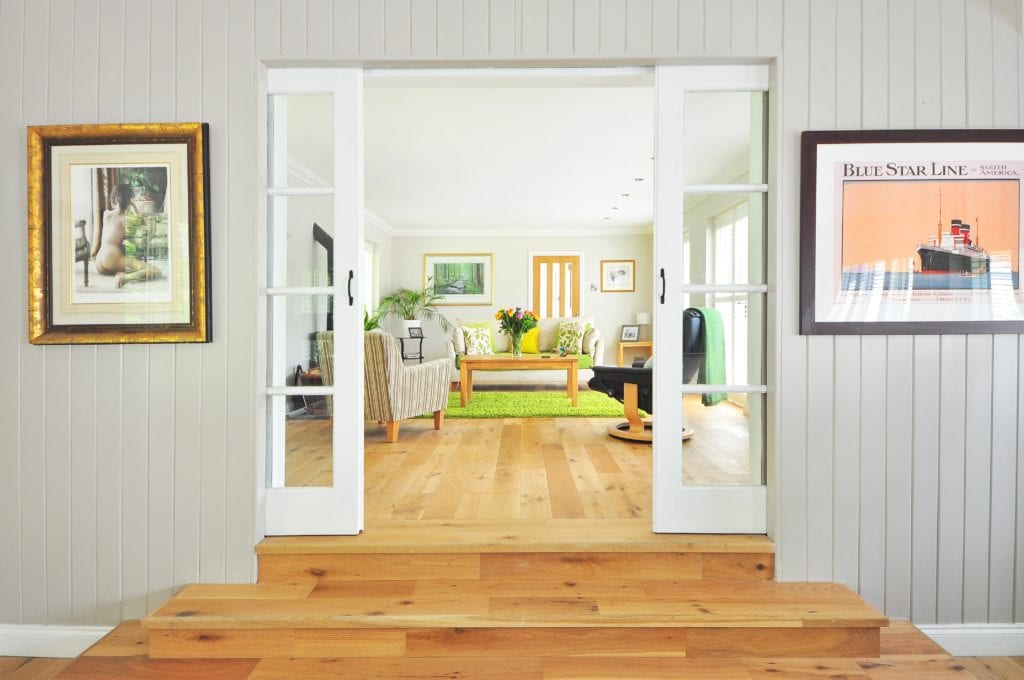
If you have less than $1,000
Focus on the smaller details of yourhome. Change out that mailbox that may have been hit a time or two (we won’t tell). Change the color of your front door, or even upgrade to a brand-new door! Be prepared to pay a little more if you have your eye on a steel front door. Give your home a fresh coat of paint, whether it’s the actual home or just the shutters or trim. Treat yourself to a new lighting fixture in the kitchen. Switch out all light bulbs to more efficient, energy saving bulbs; maybe even upgrade to a few smart light bulbs, like this starter kit for $179.00. You can’t renovate an entire kitchen on this budget, but you can add a nice backsplash, update cabinet hardware, or even get some new energy efficient appliances. You could even hire professionals to come clean the exterior/interior of your home. You’d be surprised the difference clean carpets and power washed driveways can make.
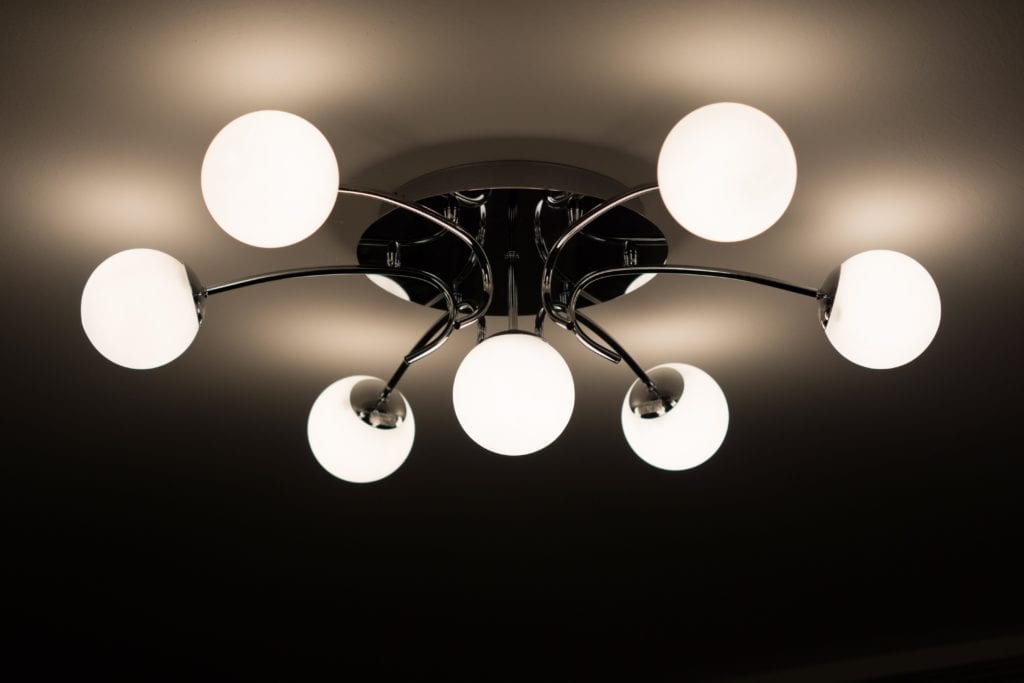
If you have $2,000
You can do a lot with this budget. Pick a nice new color for your interior walls, maybe adding an accent wall here or there. Replace those eye-sore pieces of furniture or rugs. Upgrade your kitchen counters to something more modern. You could install several smart home technology systems, such as smart thermostat, smart doorbell/security cameras, smart shades, and phone or voice controlled light switches. Open some space by knocking down that wall that’s been driving you nuts. If you’re more of a DIY-er, before picking up a sledgehammer be sure to consult with a professional to avoid taking down a load-bearing wall.
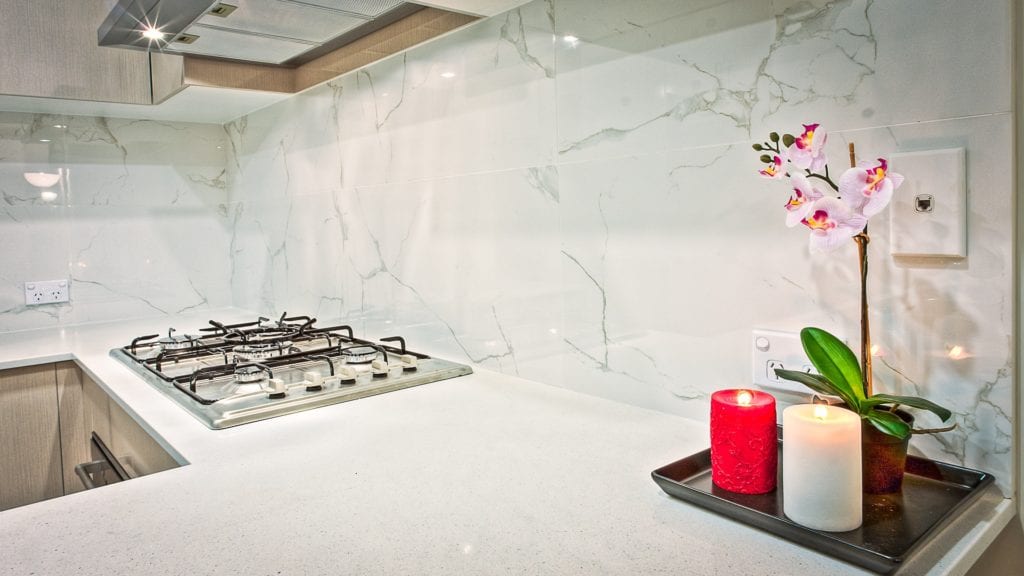
If you have over $5,000
Depending on how much you have to spend there is the potential for some pretty big renovations. For lower budgets closer to the $5,000, you could add a deck or front porch. These will not only bring big benefits to you while living in the home but will add value to your home and can be a big selling point when trying to sell. Make some upgrades to a larger bathroom or renovate a smaller one. Sticking to just a few upgrades will keep costs down. If you’re looking to completely revamp a bathroom, it can cost anywhere between $7-10,000 depending on what you want to do. You can change out the flooring in a room or two. Install new windows that are going to help keep costs down.
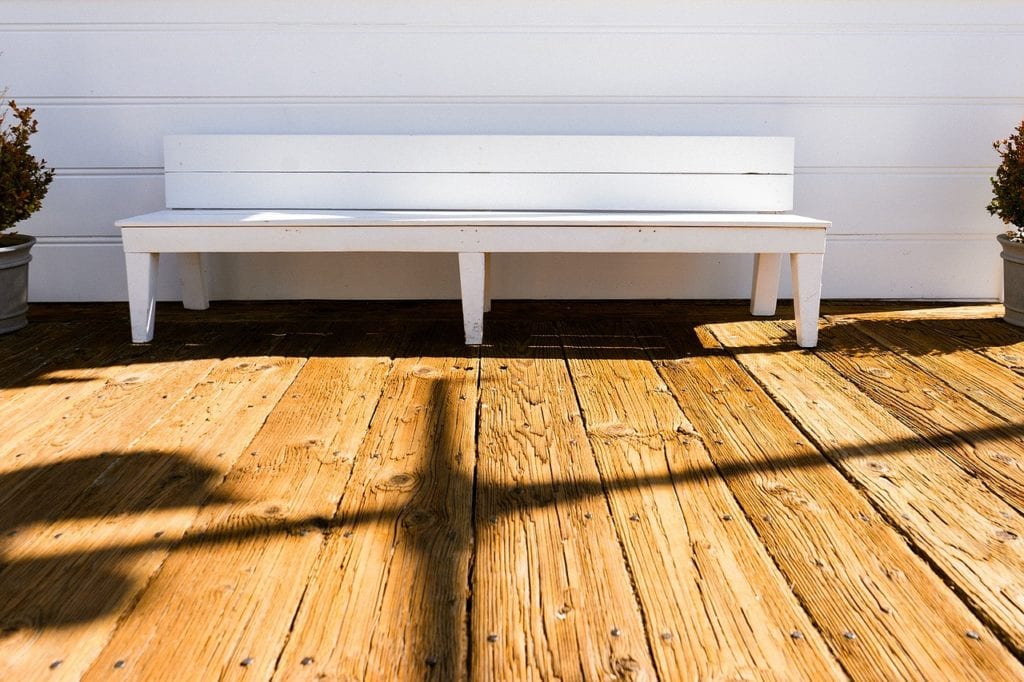
The kitchen can be a pretty big project but is one of the most used and therefore important rooms in your home. If your budget extends towards $8-10,000, you should be able to afford new countertops, redo cabinets with a fresh paint or stain, add a back splash or new lighting fixtures, and possibly some new EnergyStar kitchen appliances. A kitchen renovation is one that is sure to add value to your home. For more ideas on home renovations that give the most bang for your buck, check out this interview with our Chief Appraiser!
Investing your tax return into home renovations is great way to add value to your home regardless of whether you’re selling soon or not. Use these suggestions to help you decide what you can do within your given budget, or consider other options to help finance renovations. If you are looking to buy a new home, another way to use your tax return is as a down payment.
If you have any questions or want more information about the homebuying process, contact one of our licensed Mortgage Loan Originators. If you are ready to begin the process, click here to get started!
‘Staging’ is a term used by real estate agents that means to make your home appealing, therefore making it more marketable to potential buyers. Through this process, you increase your home value and become more emotionally detached from the house as it becomes less of your home. The ultimate goal of staging is to make your house feel like home to potential buyers, so they can easily envision themselves living there. Here are some tips if you are thinking about staging your home for sale.
De-clutter and De-personalize
The first step of staging is to de-clutter and de-personalize your home. Renting a storage space is a great idea. Take out any extraneous furniture so that you can maximize the space your home has to offer. Put away all personal photos and personal items, replacing a few with attractive professional photographs or prints. Furniture should be placed in groupings away from the wall. Not only will this visually create more space, but will also allow for buyers to easily move throughout the room. It is important to make sure every room is being used as it is intended to be. For example, don’t have your dining room set up as an office. Potential buyers often have a difficult time envisioning rooms differently than they appear and will want to see the room staged to meet their expectations.
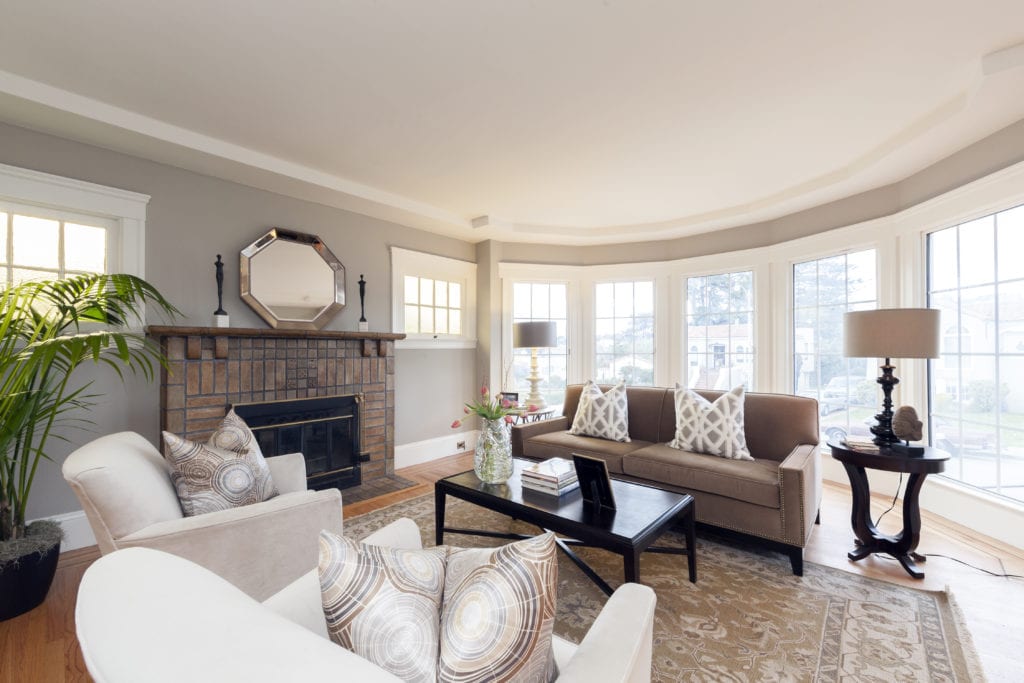
It is important to have a good flow in the house. All hallways and entrances should be clear and traffic flow in rooms should be obvious. Consider putting away area rugs—showing exposed floors sometimes makes rooms appear to be bigger. If there are any built-in appliances, fixtures, or drapery that you would like to keep, remove them now. Buyers can get attached to objects they assume will come with the house and might be turned off from making an offer if they are not.
Before you show your house to potential buyers, it is a good idea to get a home inspection. In most cases, an inspection is going to be done regardless, so having it done before buyers walk through will let them see your home in its best condition. Make any minor repairs needed, such as replacing cracked or missing floorboards, updating some windows, etc. Any repairs you make will be easily paid off once you sell your home.
Ambiance
Paint color is very important when staging a house. White or off-white walls are the general rule of thumb as they create an illusion of open space and make the rooms appear as a blank canvas. Neutral colors are also great choices. Neutral include colors from nature, so think of a muted green or blue. If you want to make your home look even more spacious, paint adjacent rooms the same color. Having the color of the walls match the color of the drapes is also a great technique and makes for a seamless interior look. Darker colors can often make rooms look especially cozy, so don’t shy away from these in your bedrooms and powder rooms. If sticking with an all-white or neutral palette, considering using an accent color to give a room little bit of personality. Small pops of color will keep the room from feeling boring.
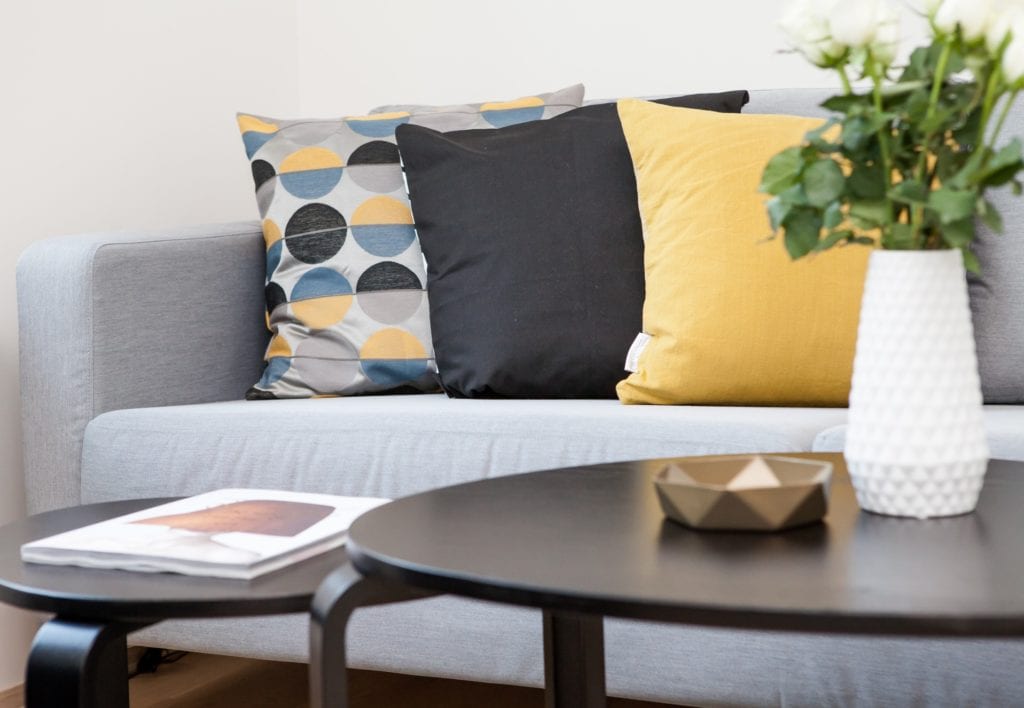
Lighting is of upmost importance during a house showing. Make sure all lights are on when showing your house and open blinds to let in as much natural light as possible. Pay attention to the lighting of each room individually. There should be three types of light in each—ambient lighting (overhead or general lighting), task lighting (under the cabinet, closet, or reading lights), and accent lighting (table or wall lamps). If the room is dark, mirrors are your best friend. Adding a large mirror or two will increase the amount of light and will even add depth to make the room feel bigger.
When staging your home, pay close attention to odors you may be releasing into the house. It is hard for people who live in a house to smell pet or smoke odors since they have become desensitized to them. Have your pets stay at a friend or family member’s house during this time, if possible. If there is a smoker who lives in the house, have them smoke outside. Don’t try to mask odors by burning scented candles or spraying air freshener—these smells can be equally as offensive as the odors can combine rather than be replaced. Get rid of odors at the source—scrub down the house, take out trash regularly, and don’t cook foods with strong odors.
As a finishing touch to your home’s ambiance, place freshly cut flowers or trimmings around the house. Not only are flowers visually appeasing, they will add a nice aroma to the air. If flowers aren’t in season, you can always create bouquets of holly, berries, and pine in the winter and branches with fall foliage in autumn.
Kitchen
Kitchens are perhaps the most important room that buyers look at when purchasing a house. Before you sell your house, update any outdated appliances. Even though appliances are a large expense, it is likely you will recoup every penny spent after selling. If you can’t afford to replace outdated cabinetry, invest in new doors, drawer faces, and knobs. Store away counter appliances like toasters and coffee makers and make sure your refrigerator is free of magnets and personal reminders. Remember, you want to make your home look as if it brand new and uninhabited.
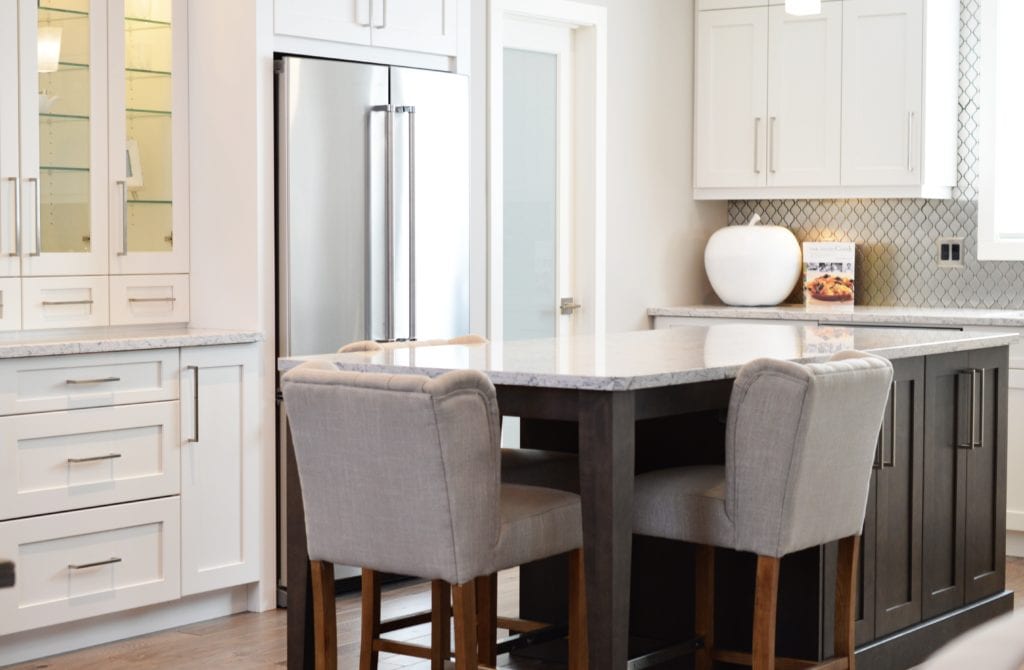
Bathroom
When staging a bathroom, your goal is to make it look and feel spa-like. Remove your personal items, such used bars of soap, razors, and toothbrushes. Make sure your cabinets are clean, uncluttered, and presentable as buyers like to check out the available storage space. Use white linens to add a sense of elegance. Put out accessories like fresh rolled-up towels, baskets, and candles to complete the spa-like atmosphere. The goal is to create an oasis the buyer doesn’t want to leave.

Bedroom
Make sure the room is free of clutter and clothes. You want the bedroom to come across as a room that is only used for rest and relaxation and has an inviting atmosphere. Again, use fresh white linens and puffy pillows to give an air of luxury. Pay close attention to your closets as buyers will be sure to look. To make them look the most spacious, remove your belongings. If you can’t, keep everything clean and organized.
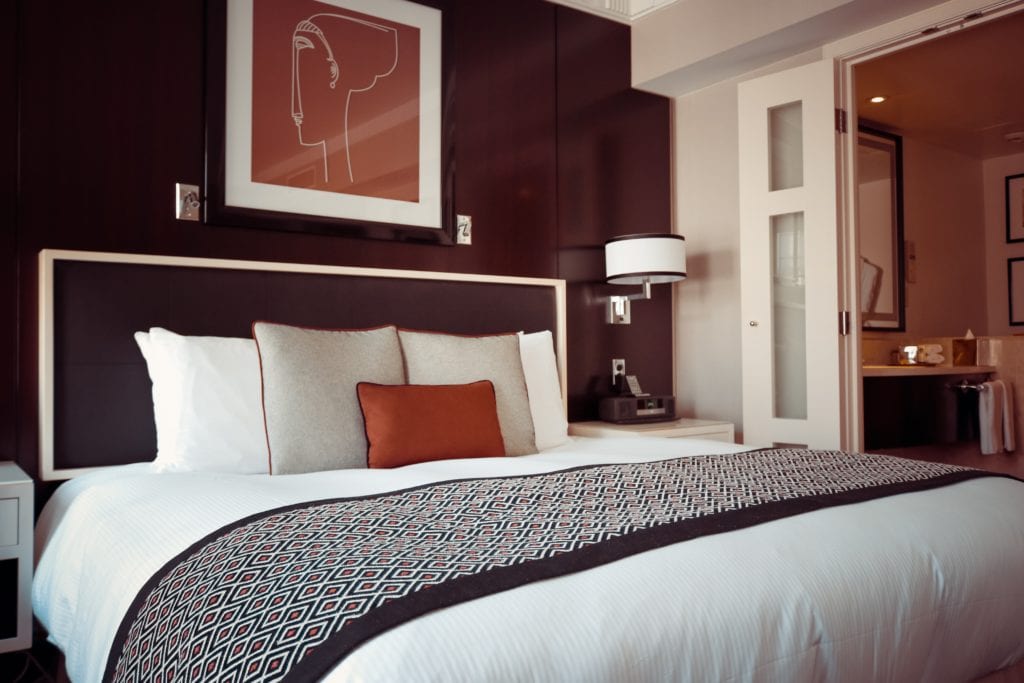
Curb Appeal
The exterior of a home is often the most important visual element of selling a house. This is where the buyer gets their first (and often lasting) impression of a house. Check that the house numbers are clearly visible from the street. Clear all sidewalks and driveways around the house. Make sure any cracks in the pavement are repaired. Your lawn should be well-kept and mowed and all leaves should be raked away. Trim shrubs and see that the gardens are properly weeded. When choosing a color for the front door pretty much anything goes, but try to aim for contrast. Pick a nice, bold color that will stand out from the rest of the house.
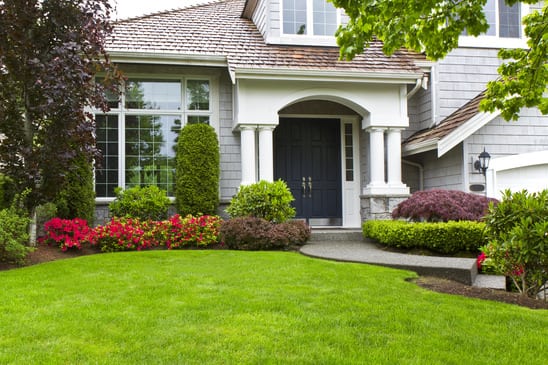
Staging Completion
The day of showing, make sure you stash away all personal items and empty wastebaskets and trash. It is also a great idea to leave the house before the buyers arrive. Following these steps should ensure that your house sells quickly and with great value. Once your house is sold, be sure to use our moving tips to help for a smooth transition to your new home. Good luck!
This blog was originally published in January 2013 and has been updated to reflect current trends.
Increasing your home’s energy efficiency offers a lot of benefits: lower energy bills, lower environmental impact, and even increased home value. This Earth Day consider some of these energy-saving tips for your home that will save you money and reduce your environmental footprint.
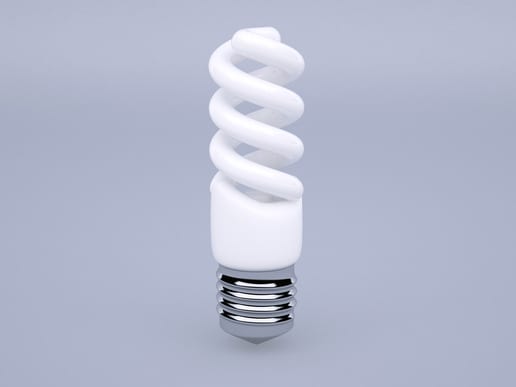
Replace Your Light Bulbs
According to the U.S. Department of Energy, the average household spends about 5% of its energy budget on lighting. If you haven’t switched to CFL or LED light bulbs yet, now is the time to do it. These bulbs use 75-80% less energy than incandescent light bulbs. Energy-efficient light bulbs will pay for themselves over time, and you won’t have to sacrifice brightness or light quality.
Clean (or Replace) Your Air Conditioner
Homeowners in the U.S. spend about $11 billion every year on home cooling. By switching to a high efficiency air conditioner, you can cut your air conditioning energy use by 20-50%! If a new air conditioner isn’t in the budget this year, make sure to properly maintain your current one. Check your air filters once a month and replace them as needed. If you have central air conditioning, remember to inspect your ductwork and make sure it’s properly sealed and connected. Click here for more energy-saving air conditioning tips.
Use Appliances Efficiently
Appliances such as refrigerators, stoves, and washing machines make up about 13% of your energy costs. Check your refrigerator’s temperatures. The recommended temperature for your refrigerator is around 35°-38° F. The recommended temperature for your freezer is 0° F. Also, washing your clothes in cold water can save on water heating costs. Make sure your dishwasher and washing machine are full before you turn them on, to avoid wasting water. Click here for more tips on using your household appliances efficiently.
Reducing your home’s energy use will help you save money on your heating, water, and electricity bills. It can also help you get more money for your house when it’s time to sell. Homes with energy efficient features have resale values about 9% higher than similar homes without these features. If you’re interested in moving or refinancing soon, talk to one of our licensed Loan Originators today to get started.
Everyone that watches home improvement shows, such as “Flip this House”, “Property Brothers”, or “This Old House”, knows that home improvements can help add value to a home. You see examples where the investor/flipper buys a home for an incredibly low price (because the structure is falling apart, or it needs serious maintenance work, or the house is over 100 years old and everything needs to be updated), they do a 20 minute montage showing the remodels, and suddenly, the house is worth double or triple the price! Sounds amazing, right?
The problem with these shows is that they make viewers think that home improvements will substantially add value to a home, and this is not always the case. Some home improvements may add living space or a special touch, but they may not be budget friendly or increase the value of a home. This is because these improvements often end up costing way more than what the return on investment ends up being (here is a great example by Houselogic).
So which home improvements actually do give you “more bang for your buck”? Here are 6 home improvements that have the highest return of investment.
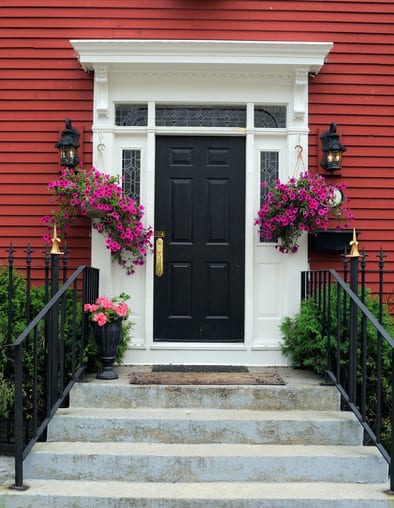
According to Remodel magazine’s 2014 Cost vs. Value Report, a steel entry door replacement has a 96.6% return on investment (based on national averages). This means that this low-cost project not only can help you increase the value of your home, it can also increase dramatically your home’s curve appeal. Check out the designs of these front doors for ideas and inspiration.
With home owners’ ever-increasing love of outdoor living, wood deck additions have and will continue to be a great investment for a home. Having a deck built creates living area in your back yard, and it also helps increase your home’s value with an 87.4% average return on investment. Here are some before and after deck makeovers to get you inspired.
Remodeling an attic to turn it into a bedroom is a cost-effective way to add livable square footage and another bedroom to a home. This way you can maximize your home’s living space, and feel great since the average return on investment on these remodels are 84.3%. Get some inspirations with these 16 amazing attic remodels.
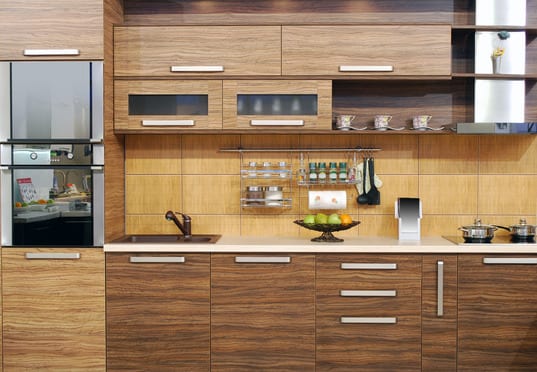
The kitchen is one of the most used places in a home, and no one wants to hang out in a cramped or outdated kitchen. A minor kitchen remodel will create a beautiful and custom space, as well as a return on investment on average of 82.7%. Check out this great kitchen remodeling guide for tips and advice.
Replacing old windows can help improve the look and feel of a home, as well as save on heating and cooling costs. Window replacements have a high return on investment of 79.3% for wood windows, and 78.7% for vinyl windows. Here is an article on how to choose the right windows for your home.
Vinyl siding is the face of your home, and it has a huge impact on your home’s curve appeal and the overall value of a home. Clean and well cared for siding shows that the home is well taken care of and in good shape. And replacing old siding can return 78.2% on the initial investment. Here is a great guide on how to choose siding for your home.
Home improvements are a great way to maintain a home and add your personal touch. But remember, just because the changes you’ve always wanted don’t have a high return on investment, it doesn’t mean that you shouldn’t do the project. If you are looking to stay in your home for several years, home improvements should be made for your own benefit. But if you are looking to sell your home soon and/or for ways to add value to your home, then thinking about what home improvements that have the best return on investment might be beneficial.
If you are looking to sell your home soon, click here to contact one of our Licensed Mortgage Loan Originators today to learn about what mortgage loan is right for you.
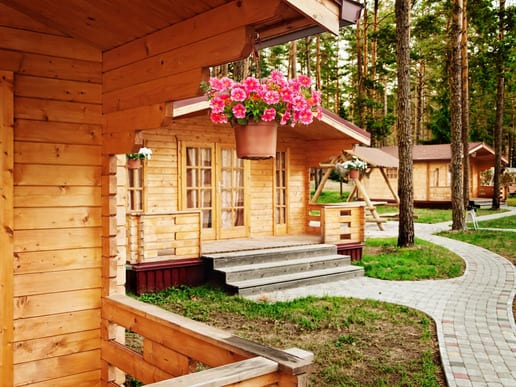
Are you looking to do a home renovation? Would you like to re-do your kitchen or baths? Do you need new flooring? You might want get a new roof or repair a damaged section of your house. Making improvements to your home can be very costly, and it can be hard to come up with thousands of dollars to pay the contractor’s. If you are looking to improve your home, but lack the necessary funds, consider applying for a Home Improvement loan.
Definition
Home Improvement loans, or FHA 203(k) loans, are a type of federally insured mortgage loans that are used to fund renovations and repairs. These loans can be made on a borrower’s primary residence for up to a maximum of 110% of the after improved value of your home. There is a minimum of $5000 of required repairs with no maximum (subject to FHA’s maximum loan limits). These loans can be made to refinance your existing home or purchase an existing home.
Requirements
Loan qualifications are the same as every other FHA forward mortgage. A potential applicant will need to credit and income qualify. You will need to get an estimate from a state licensed contractor for all work to be performed. If total repairs exceed $35,000 or if repairs are of a health, safety or structural nature than a inspector form the Department of Housing & Urban Development will be required to supervise the repairs.
Getting the Loan
If you would like to see if you will qualify for a Home Improvement Loan, contact one of our Licensed Mortgage Loan Originators by clicking here.